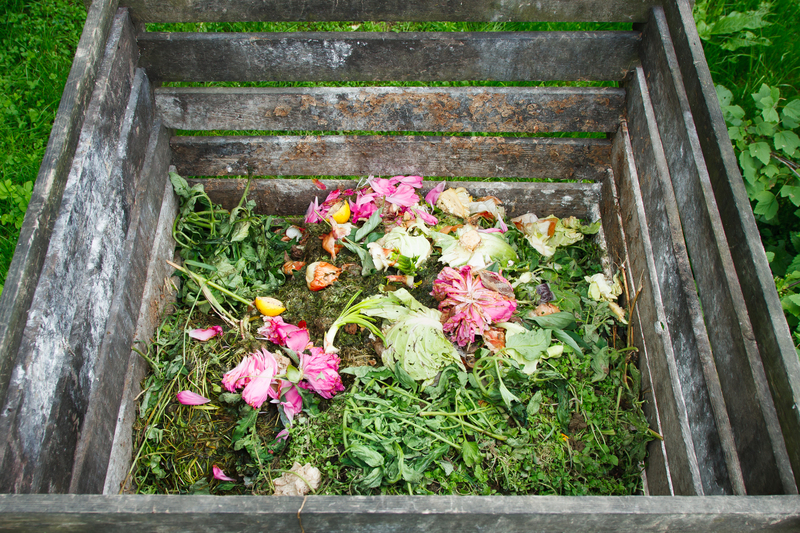Making the Right Choices When Disposing of PPE Waste
The global demand for personal protective equipment (PPE) has surged in recent years, especially due to the COVID-19 pandemic and increasing awareness of occupational safety. While PPE such as masks, gloves, gowns, and face shields play a crucial role in protecting individuals from various hazards, their widespread usage has introduced significant challenges regarding their disposal. Making the right choices when disposing of PPE waste is not just a personal responsibility but a collective imperative to protect public health and the environment.

Understanding PPE Waste: Types and Impacts
What is PPE Waste?
PPE waste refers to discarded personal protective equipment, including disposable gloves, masks, respirators, goggles, coveralls, shoe covers, and face shields. These items, typically made from non-biodegradable materials like plastics and synthetic fibers, are essential for minimizing exposure to biological, chemical, and physical hazards.
However, after serving their purpose, if these items are not disposed of correctly, they pose a dual threat: contamination risk and long-term environmental damage. Making informed choices when disposing of PPE waste ensures the safety of individuals and the sustainability of our planet.
Environmental Consequences of Improper PPE Disposal
- Plastic Pollution: Most PPE items, such as masks and gloves, are composed of polypropylene or other plastic polymers, which persist in the environment for hundreds of years.
- Habitat Disruption: Discarded PPE is increasingly being found in rivers, oceans, forests, and city streets, endangering wildlife and disrupting natural habitats.
- Microplastics: PPE waste eventually breaks down into microscopic particles which contaminate soil, water, and enter the food chain, posing health risks to humans and animals alike.
- Public Health Hazard: Contaminated PPE can spread infectious agents if encountered accidentally by waste handlers, street cleaners, or unsuspecting civilians.
It is evident that choosing proper methods for PPE waste disposal is critical both from a health and environmental perspective.
Guidelines for Safe PPE Waste Disposal
How to Handle PPE Waste Responsibly
To dispose of PPE waste correctly, it's important to follow established protocols--whether you are an individual, healthcare worker, or facility manager. Adhering to these guidelines helps curb environmental pollution and mitigates the risk of disease transmission.
Steps for Individuals: Everyday PPE Waste Disposal
- Separate PPE Waste from Regular Waste: Use a different bin or a specific bag for used PPE, such as masks and gloves. Avoid mixing it with household recyclables or compost.
- Seal Used PPE: Place used PPE in a plastic or leak-proof bag, seal it tightly to prevent any leakage, and prevent direct contact with other waste.
- Label the Bag: Clearly mark the bag as "PPE Waste" or "Hazardous" if possible, to alert waste handlers about its contents.
- Dispose of in Designated Bins: If your locality has designated PPE disposal points, use them. If not, disposed sealed PPE waste with general waste is generally permitted, rather than recycling or compost bins.
- Sanitize Hands: After handling used PPE and waste, thoroughly wash your hands with soap and water, or use an alcohol-based sanitizer.
Making the right decisions when getting rid of PPE waste begins with individual responsibility at the household level.
PPE Waste Disposal in Healthcare and Occupational Settings
- Utilize Biohazard Waste Bins: PPE used in healthcare or laboratories must be disposed of in yellow biohazard bags or bins, in compliance with local regulations.
- Incineration: Many medical facilities use incineration for PPE waste, which effectively kills pathogens and reduces waste volume, though it should be done in a controlled, environmentally responsible manner.
- Autoclaving: Non-incineration methods like autoclaving (steam sterilization) can disinfect PPE before landfill disposal.
- Staff Training: Ensure facility staff are trained on proper segregation, handling, and transportation of PPE waste to prevent accidental exposures.
Strict compliance with these protocols ensures safe and eco-friendly PPE waste disposal in professional environments.
The Legal Framework for PPE Waste Management
Regulations Governing PPE Waste Disposal
Various national and international bodies have established regulations for handling PPE waste safely and responsibly. In the United States, for example, the Environmental Protection Agency (EPA) oversees guidelines for medical and hazardous waste, while the Occupational Safety and Health Administration (OSHA) mandates worker safety in PPE disposal.
- For Healthcare Settings: Must comply with local and federal hazardous waste laws for infectious materials.
- For Businesses: Small businesses using PPE must follow public health guidelines for proper collection and disposal, especially if waste is potentially contaminated.
- International Protocols: The World Health Organization (WHO) provides recommendations for managing PPE waste during outbreaks and pandemics.
Familiarizing yourself with the applicable laws ensures that making the right choices when disposing of PPE waste aligns with legal requirements and best practices.
Challenges in PPE Waste Management
Volume and Contamination
The unprecedented volume of PPE consumed globally poses unique logistical challenges for disposal systems. Standard waste management infrastructure can quickly become overwhelmed, particularly during pandemics or health crises.
- Increased Waste: The spike in single-use masks and gloves has led to an exponential growth in landfill and incineration needs.
- Risk of Infectious Waste: PPE contaminated by infectious agents requires special handling and poses additional risks to sanitation workers if not managed correctly.
- Lack of Segregation: Improper segregation at the source leads to mixing of hazardous and non-hazardous waste streams, complicating treatment and endangering recycling industries.
Lack of Public Awareness
Often, individuals and businesses are unclear about the proper disposal protocols for PPE waste. This can lead to irresponsible disposal, increased litter, and environmental pollution.
- Public Education: Ongoing campaigns are essential to inform citizens about the significance of PPE waste segregation and disposal procedures.
- Labeling and Instructions: Manufacturers can help by providing clear disposal instructions on PPE packaging.
Sustainable Alternatives and Innovations in PPE Disposal
Recycling and Recovery Programs
While most conventional PPE is not recyclable through municipal systems, specialized recycling programs are emerging to process PPE waste sustainably.
- PPE Recycling Companies: Some businesses, such as TerraCycle, offer collection and recycling services for used masks and gloves, converting them into raw materials for manufacturing.
- Closed-Loop Systems: Hospitals and workplaces are implementing closed-loop collection systems, ensuring used PPE is collected, disinfected, and either recycled or disposed of safely.
Sustainable PPE waste disposal methodologies are at the forefront of combatting pollution and supporting a circular economy.
Biodegradable and Reusable PPE
Innovation in materials science is empowering the production of biodegradable PPE made from materials like polylactic acid (PLA), bamboo, or cellulose. Wider adoption of reusable PPE--such as cloth masks and washable face shields--can also significantly reduce the flow of PPE waste.
- Switching to Reusables: Encourage the use of certified, reusable PPE whenever safe and practical. Clean and disinfect reusable items following official guidelines.
- Compostable PPE: Ensure compostable PPE is disposed of in facilities capable of industrial composting, not regular compost heaps.
Opting for alternatives that lessen the environmental footprint is a proactive choice for sustainable PPE waste management.
Community-Level Strategies for PPE Waste Disposal
Public Infrastructure and Social Responsibility
To support individuals in making the right choices for PPE disposal, communities need robust systems and policies.
- Accessible Disposal Points: Install dedicated PPE waste bins in public spaces, offices, schools, and transportation hubs.
- Local Collection Drives: Organize special collection programs to safely gather and transfer PPE waste to authorized processing facilities.
- Collaborative Action: Partnerships between local governments, businesses, community groups, and environmental organizations can drive effective PPE waste management initiatives.
Innovative Technologies in PPE Waste Processing
Emerging technologies are revolutionizing the way we deal with PPE waste, making management more efficient and environmentally sound.
- Pyrolysis: Converting used PPE into fuel through high-temperature processes, offering a way to extract energy from what would otherwise be landfill waste.
- Advanced Autoclaving: Innovations in autoclave design permit sterilization and material recovery, rather than simple disposal.
- Sorting and Robotics: Use of AI-powered robots in waste sorting facilities to identify and segregate PPE waste from regular trash efficiently.
Staying up-to-date with these innovations can help organizations and municipalities improve their PPE waste management systems.

Tips for Making the Right Choices When Disposing of PPE Waste
Checklist for Responsible PPE Waste Management
- Always separate PPE waste from general and recyclable waste at source.
- Use sealed bags and dedicated bins for PPE disposal, especially if items are contaminated.
- Follow local guidelines and signage regarding PPE waste drop-off points.
- Educate yourself and others in your household or workplace about safe PPE waste handling.
- Advocate for reusable or sustainable PPE alternatives when possible.
- Participate in or support community-led PPE recycling initiatives.
Being proactive and mindful about how we handle discarded masks, gloves, and gowns is a small step that makes a significant difference.
Conclusion: Prioritize Safety and Sustainability in PPE Waste Disposal
In the wake of ongoing health challenges, the widespread use of PPE is here to stay. The environmental and health risks posed by improper disposal of millions of units of PPE every day have made making the right choices when disposing of PPE waste a crucial responsibility for all sectors of society. By following appropriate guidelines, embracing new technologies, supporting sustainable alternatives, and leading through community-level action, individuals and organizations can ensure the safety of both humans and the environment.
Let's make an effort to stay educated and diligent. The choices we make today regarding PPE waste disposal will echo in the health of our ecosystems and communities for generations to come.
